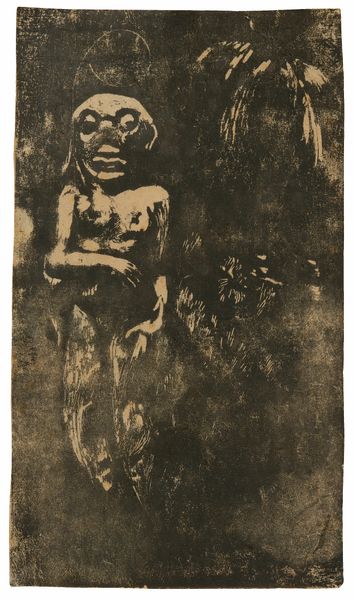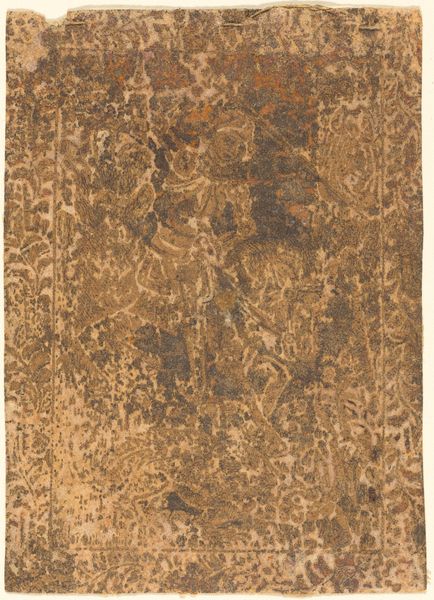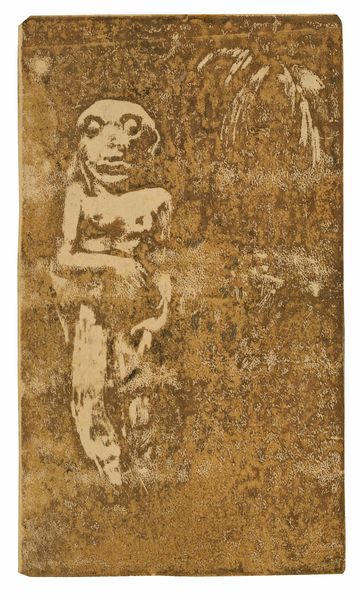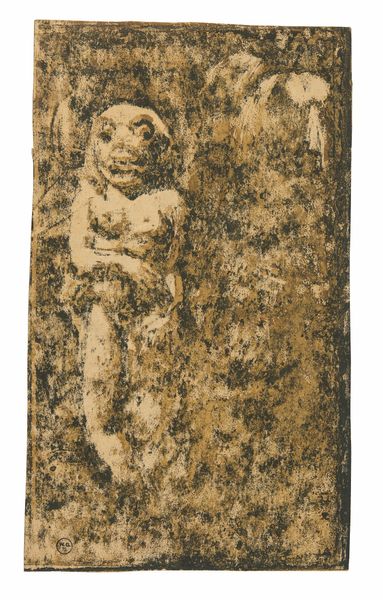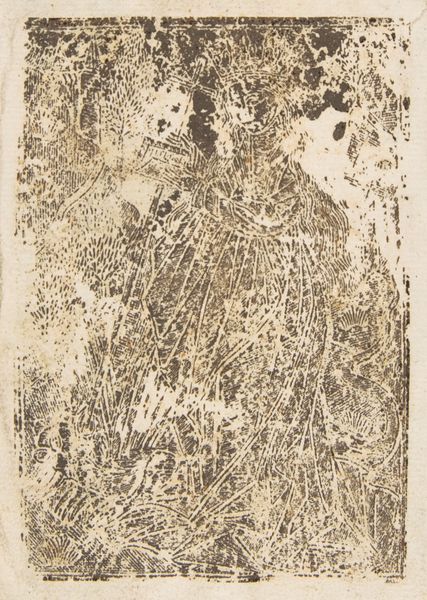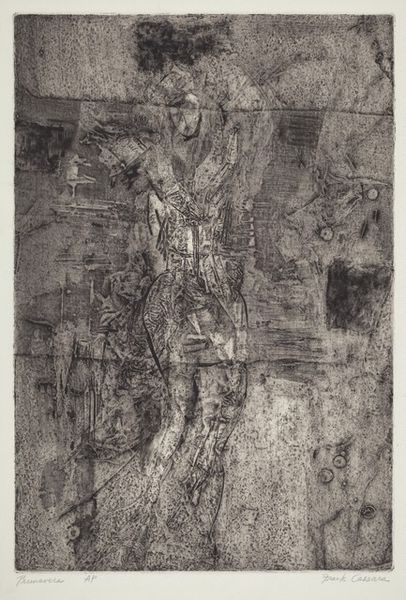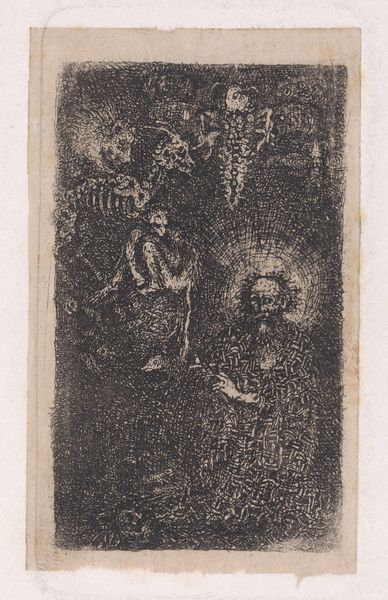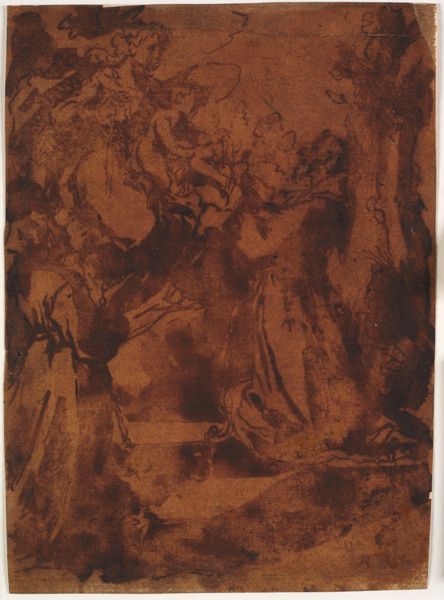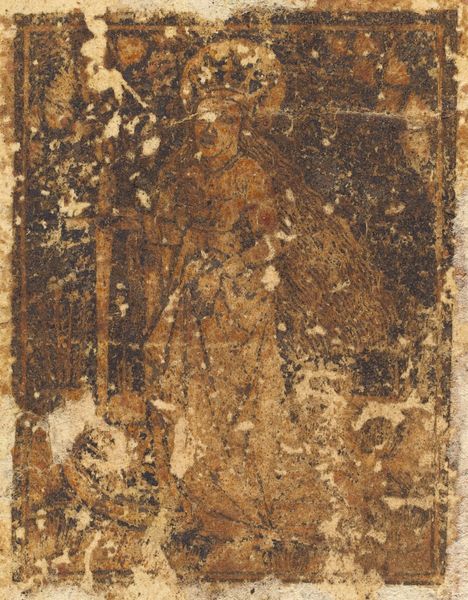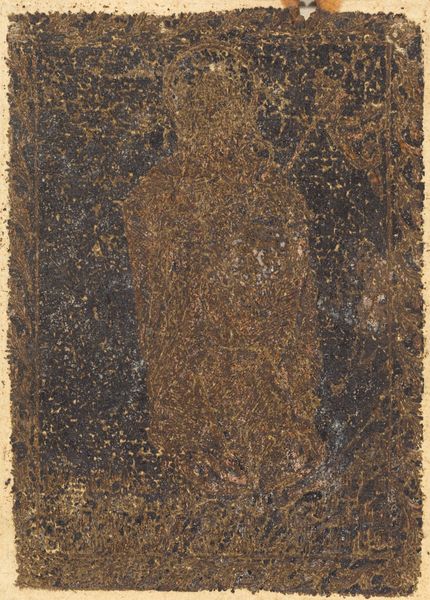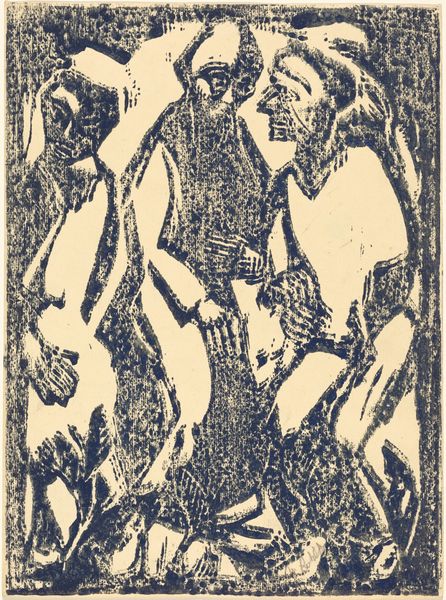![Oviri (The Savage) [recto] by Paul Gauguin](/_next/image?url=https%3A%2F%2Fd2w8kbdekdi1gv.cloudfront.net%2FeyJidWNrZXQiOiAiYXJ0ZXJhLWltYWdlcy1idWNrZXQiLCAia2V5IjogImFydHdvcmtzL2M1ZThjY2I0LWE1ZDgtNDc1ZS1iYWRkLTk2ZWU4YmFiMzUxMC9jNWU4Y2NiNC1hNWQ4LTQ3NWUtYmFkZC05NmVlOGJhYjM1MTBfZnVsbC5qcGciLCAiZWRpdHMiOiB7InJlc2l6ZSI6IHsid2lkdGgiOiAxOTIwLCAiaGVpZ2h0IjogMTkyMCwgImZpdCI6ICJpbnNpZGUifX19&w=3840&q=75)
print, etching
#
ink painting
# print
#
etching
#
landscape
#
figuration
#
symbolism
#
post-impressionism
#
nude
#
erotic-art
Dimensions: image: 20.4 × 12.2 cm (8 1/16 × 4 13/16 in.) sheet: 37 × 19 cm (14 9/16 × 7 1/2 in.)
Copyright: National Gallery of Art: CC0 1.0
Curator: Ah, "Oviri (The Savage)" by Paul Gauguin, dating from 1894-1895. This impression is an etching in shades of brown, powerfully evocative. Editor: Good lord, that face is arresting. A strange blend of human and something… other. There's a disquieting power to it. It feels primordial, like some ancient deity emerging from the earth. Curator: Indeed. Gauguin employs a restricted palette here, almost monochromatic, which amplifies the subject’s stark presence and focuses our attention on the figure's unsettling visage. The textured surface, achieved through the etching process, lends a tactile quality to the piece. Note the contrasting textures between the figure and the background vegetation. Editor: The background almost feels like a shroud, or maybe the steam of a jungle, obscuring and enclosing. Is it me or does the whole thing feels claustrophobic, feverish? It's like she's birthing herself from the land, or the land is claiming her back. And those blank, staring eyes... Curator: It reflects Gauguin's interest in representing primal femininity and exploring themes of life and death, creation and destruction through a mythical lens. It synthesizes the female form and pagan idols, as he strived to challenge established Western conventions of beauty and identity, particularly in response to his experiences in Tahiti. The title, "The Savage", also forces a re-evaluation. Who exactly is savage, the colonizer or the colonized? Editor: So true! And that tension hangs in the air, thick as the Tahitian humidity I’ve only ever dreamt about. It’s about beauty but also grotesqueness, about the ‘noble savage’ and something darker. This etching really encapsulates those post-colonial anxieties… maybe intentionally. It leaves me with more questions than answers. A wild, compelling piece. Curator: Indeed. Gauguin challenges the viewer with a nuanced interrogation of both self and society. Thank you. Editor: Thanks to you too. A challenging look back.
Comments
No comments
Be the first to comment and join the conversation on the ultimate creative platform.
